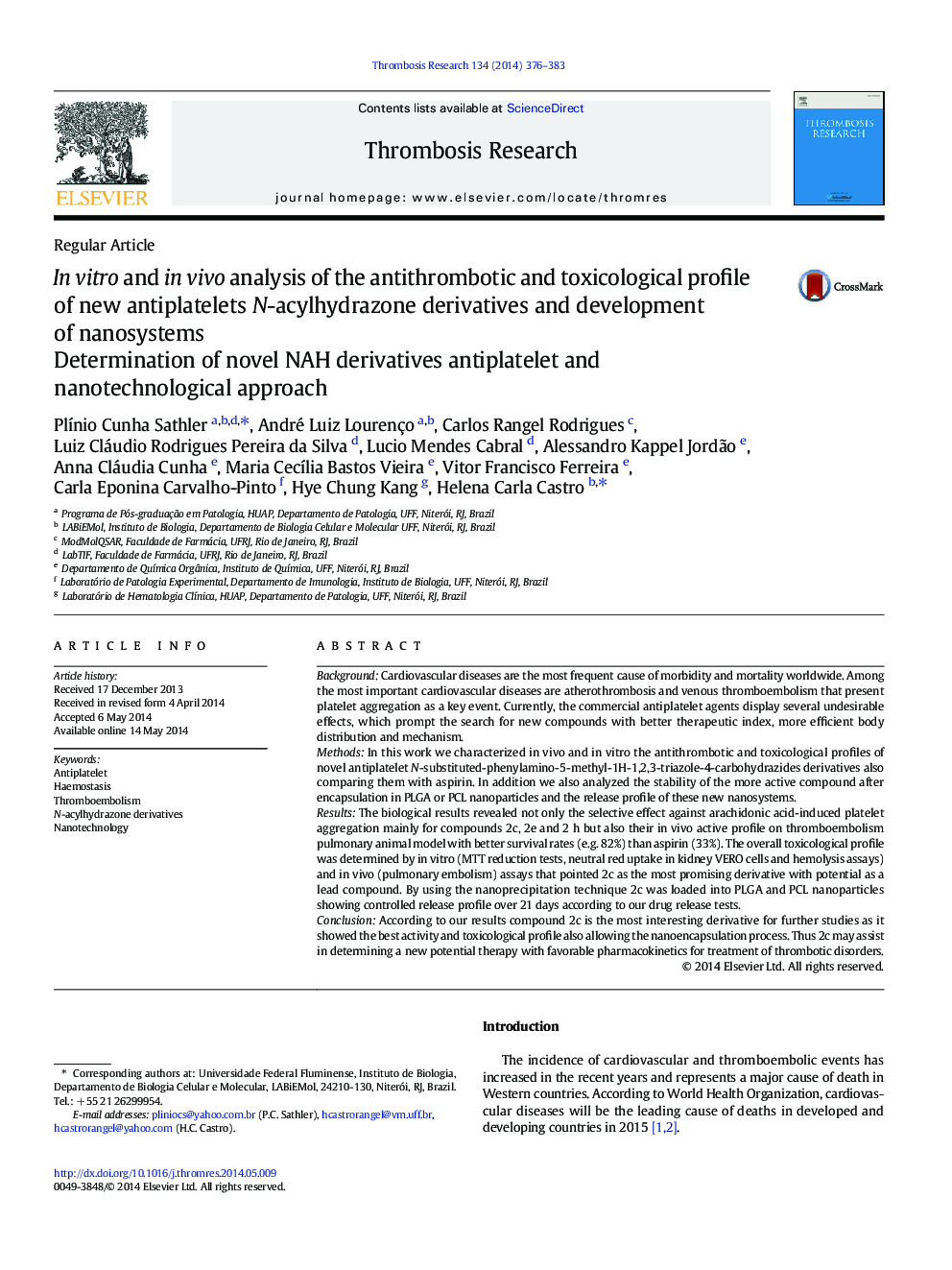| کد مقاله | کد نشریه | سال انتشار | مقاله انگلیسی | نسخه تمام متن |
|---|---|---|---|---|
| 6002330 | 1182967 | 2014 | 8 صفحه PDF | دانلود رایگان |

BackgroundCardiovascular diseases are the most frequent cause of morbidity and mortality worldwide. Among the most important cardiovascular diseases are atherothrombosis and venous thromboembolism that present platelet aggregation as a key event. Currently, the commercial antiplatelet agents display several undesirable effects, which prompt the search for new compounds with better therapeutic index, more efficient body distribution and mechanism.MethodsIn this work we characterized in vivo and in vitro the antithrombotic and toxicological profiles of novel antiplatelet N-substituted-phenylamino-5-methyl-1H-1,2,3-triazole-4-carbohydrazides derivatives also comparing them with aspirin. In addition we also analyzed the stability of the more active compound after encapsulation in PLGA or PCL nanoparticles and the release profile of these new nanosystems.ResultsThe biological results revealed not only the selective effect against arachidonic acid-induced platelet aggregation mainly for compounds 2c, 2e and 2Â h but also their in vivo active profile on thromboembolism pulmonary animal model with better survival rates (e.g. 82%) than aspirin (33%). The overall toxicological profile was determined by in vitro (MTT reduction tests, neutral red uptake in kidney VERO cells and hemolysis assays) and in vivo (pulmonary embolism) assays that pointed 2c as the most promising derivative with potential as a lead compound. By using the nanoprecipitation technique 2c was loaded into PLGA and PCL nanoparticles showing controlled release profile over 21Â days according to our drug release tests.ConclusionAccording to our results compound 2c is the most interesting derivative for further studies as it showed the best activity and toxicological profile also allowing the nanoencapsulation process. Thus 2c may assist in determining a new potential therapy with favorable pharmacokinetics for treatment of thrombotic disorders.
Journal: Thrombosis Research - Volume 134, Issue 2, August 2014, Pages 376-383